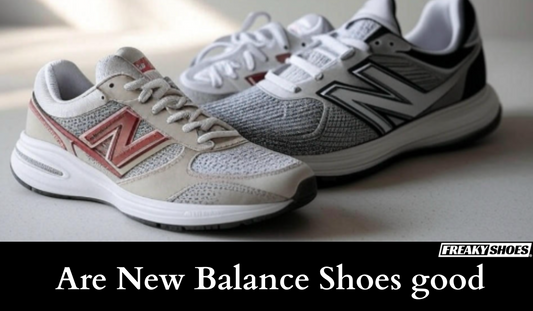Have you ever caught yourself wondering, Can you eat Crocs? We know—it sounds wild. But this question is all over the internet, and we had to get to the bottom of it.
Here’s what we found: No, you cannot eat Crocs. They’re made from Croslite, a foam-like resin that’s not digestible, not nutritious, and definitely not food. You won’t get sick instantly from chewing on one, but it can’t give you calories or keep you alive.
But trust us—you’ll want to read the rest.
Find out what happens when you actually try cooking Crocs, and what vets say about pets chewing on them. We are also exploring real edible shoe alternatives.
Key Takeaways
-
Crocs are made from Croslite, which is not edible or digestible.
-
Some people think you can eat Crocs in survival situations—but you really can’t.
-
Boiling or cooking Crocs releases chemical fumes and ruins your pot.
-
Eating Crocs has zero nutritional value and can block your digestive system.
-
Viral internet videos often pretend to eat Crocs, but they never actually swallow them.
-
Pets chewing on Crocs can face serious health risks, especially dogs.
-
There are real edible shoes out there, made of chocolate, bread, and even ramen.
-
Just because something looks soft doesn’t mean your stomach can handle it.
Can You Eat Crocs? Are They Edible?

No, you should not eat Crocs. They are not made for eating, and they aren’t safe for your stomach. While some people on the internet have claimed you can eat Crocs as a joke, that doesn’t mean it’s a good or safe idea.
What Are Crocs Made Of, and Is It Really Edible?
When we researched this question, we had to dig into what Crocs are actually made of. Crocs aren’t made from rubber or plastic like most people assume. They’re made from a closed-cell resin called Croslite. This material feels soft and cushy, but it’s not natural, and it’s definitely not food.
Croslite isn’t toxic in the same way poison is, but it’s also not meant for human digestion. The material is designed for comfort, not consumption. It doesn’t break down in your stomach, and it won’t give you any nutrients.
Eating Crocs can seriously mess with your digestion. If you heat or boil Croslite, it releases a horrible chemical smell. That alone should be a warning sign.
We saw a few viral TikTok and YouTube videos where people pretended to cook their Crocs like ramen. Honestly, when we saw those clips, we were shocked at how far people go just for clicks. It might be funny to watch, but it’s not safe to try. Boiling a Croc won’t magically turn it into edible soup.
Why Some People Think You Can Eat Crocs (And What We Think About That)
Believe it or not, there’s a real reason some folks say you can eat Crocs—especially in survivalist circles. We came across forums where survivalists claim that, in extreme situations, you might be able to survive by boiling and chewing on Crocs.
The idea is that Croslite is similar to some non-toxic synthetic materials, and that it won’t kill you immediately. But let’s be clear: surviving and eating are not the same thing.
Even if Croslite doesn’t kill you on the spot, it won’t help you either. Your body can’t break it down. You won’t get calories or nutrients. You might just end up with stomach pain, or worse, a trip to the ER.
So, What Happens If Someone Actually Eats a Piece of Croc?
When we were writing this, we remembered a funny—but kind of scary—story a friend told us. Their dog actually chewed up and swallowed a chunk of Croc. The vet said the dog was lucky. It didn’t digest the piece, and it passed through without surgery. But if it had gotten stuck, that could’ve been a real emergency.
Now imagine that happening inside your stomach.
Eating a piece of Croc can lead to blockage, nausea, and possibly even surgery. First, it can be a serious choking hazard because the material is tough and not meant to be chewed or swallowed. Once it’s in your stomach, it won’t break down like regular food, which can cause painful blockages.
Plus, the chemicals used in the foam aren’t exactly food-grade, so they could cause nausea or other stomach issues. In the worst case, it might even require surgery to remove. So, it’s definitely not a snack anyone should try.
If you love your Crocs, then you must read this guide: Are Crocs out of fashion? There’s some serious advice in this guide.
How Many Calories in a Croc Shoe?
There are zero calories in a Croc shoe because it’s not food. Crocs are made from Croslite, a synthetic foam material. Your body can’t digest it, so it can’t give you any energy or nutrients. We looked into it carefully, and there’s no measurable calorie content.
When we researched this, we even checked food chemistry databases and survival guides to see if Croslite could be broken down into calories. It can’t. Even if someone managed to swallow a piece, their body wouldn’t absorb anything useful. It would just pass through, like swallowing a piece of rubber or plastic.
Do Crocs Have Nutritional Value?

Crocs have no nutritional value. Croslite doesn’t contain any vitamins, minerals, proteins, fats, or carbs. That means your body gets nothing from eating them—no energy, no nutrients, just trouble.
When we researched Croslite, we couldn’t find a single nutritional element that would qualify it as food. We even compared it to things like chewing gum or bark, which at least have plant fiber. Croslite has none of that.
Smith R said that it’s a closed-cell resin, completely synthetic, and made to last, not to be digested. So even if someone says it’s "non-toxic," that doesn't mean it’s nutritious or edible.
Why Do People Even Ask If Crocs Are Edible?
It sounds like a joke at first, but a lot of people genuinely ask if Crocs are edible. The question pops up often on Reddit, YouTube, and even survivalist forums. Here’s why do people even ask if they can eat Crocs:
|
Reason |
Details |
|
Internet Meme |
Started as a joke, like boiling Crocs as “hard meals.” |
|
Survival Myths |
Some think Croslite is edible in survival, but it’s not digestible. |
|
YouTube Challenges |
Creators fake eating Crocs for views, but it’s just for show. |
How to Cook Crocs?
Let’s start with this—you shouldn’t cook Crocs. They’re not food, and cooking them doesn’t make them edible. That said, we did experiment with this just to see what would happen.
Here’s how to Cook Crocs (for Fun, Not Eating):
-
Clean the Crocs: Rinse them to remove dirt and debris.
-
Cut into Pieces: Use scissors or a knife to make smaller, manageable chunks.
-
Boil Water: Fill a pot with water and bring it to a boil.
-
Add the Crocs: Drop the pieces in and let them simmer for a few minutes.
-
Season for Fun (Optional): Add salt, spices, or herbs for a more realistic effect.
-
Stir Occasionally: Keep them moving for even heat exposure.
-
Drain and Serve (for the Joke): Strain the pieces and plate them as a gag.
Note: Do not actually eat them. Crocs are not food.
We also tried pan-frying a piece, just like we’d seen on YouTube. The results were worse. The foam started to blister, and smoke came off it. We opened all the windows. That’s when it hit us—if anyone’s thinking of doing this indoors, don’t.
What shocked us most was how durable the material actually is. Even after intense boiling and frying, it didn’t fall apart easily. It held its shape. That tells us how tough Croslite really is (and how unlikely your body would be able to break it down).
Is It Safe to Boil Crocs?

No, boiling Crocs is not safe, especially not indoors or near food. The Croslite foam material reacts badly to high heat. It doesn’t melt right away, but it gives off fumes that smell harsh and chemical-like.
We boiled one of our older Crocs in a basic kitchen pot just to see what would happen. Within five minutes, the kitchen filled with a strange smell. It wasn’t just rubbery—it was chemical and sharp.
We immediately opened windows and turned on fans. And honestly, we didn’t even keep it going the full time we planned. It felt unsafe.
Croslite is a proprietary foam blend. The exact formula isn’t public, but we do know it’s not organic. When heated, these kinds of materials can release volatile organic compounds (VOCs).
Can Animals Eat Crocs Shoes?
No, animals should not eat Crocs shoes. But if you’ve got a dog like ours, chances are it’s already chewed on one. Crocs are made from Croslite, which is soft and squishy—basically a chew toy in disguise. The problem is that Croslite isn’t digestible and can cause serious health issues if swallowed.
We’ve heard this story more than once. A friend of ours had a golden retriever who chewed the heel off their Croc. They didn’t think much of it until the dog started vomiting later that day. A trip to the vet confirmed a chunk of foam had gotten stuck in the dog’s gut. Luckily, it passed on its own, but it was a close call.
It’s not just dogs either. We’ve seen photos online of parrots, rabbits, and even ferrets trying to chew on Crocs. The texture seems to attract animals. That’s why we always keep ours out of reach when we’re not wearing them. Especially during the teething stage, puppies love to go after anything squishy.
If your pet does chew on Crocs, watch closely for signs of distress. That includes drooling, loss of appetite, vomiting, or acting lethargic. We asked a local vet during our research, and they told us: “If in doubt, bring the pet in. Don’t wait for it to pass naturally.”
Are There Edible Shoe Alternatives?
Yes, there are actual edible shoes out there. Most are made for fun or as part of food art. These aren’t practical footwear, but they’re 100% safe to eat.
|
Type |
Details |
|
Chocolate Shoes |
Made from real chocolate, often shaped like heels. Edible, not wearable. |
|
Bread Shoes |
Baked from real dough. Fun and edible, but falls apart quickly. |
|
Ramen Shoes |
Dried noodles molded into shoes. Creative but not practical or tasty. |
Final words
After researching, experimenting, and asking the wildest questions, we came to one clear answer: Crocs are not food. They can’t give you calories or nutrients. Moreover, boiling them is smelly, messy, and unsafe.
Survivalists might talk about eating them, but it’s not a smart move.
Also, pets should never chew them (vet bills are no joke).
So next time someone asks, “Can you eat Crocs?” you’ll have the facts—and probably a good laugh.










